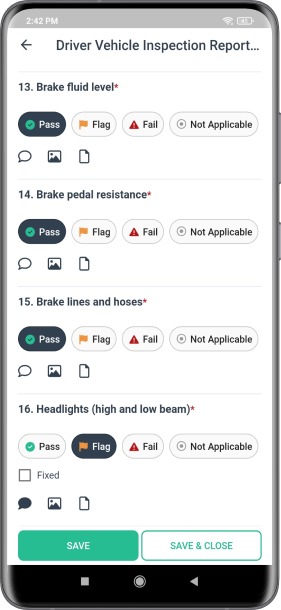What is DVIR?
The Driver Vehicle Inspection Report (DVIR) is a necessary document for commercial vehicle drivers in the U.S. and Canada. It shows that a driver has checked their vehicle for any issues before and after a trip.
These inspections are done twice daily: once before the trip starts (pre-trip) and once after it ends (post-trip). These steps are necessary to ensure safe operation of vehicles and identify vehicle defects before any trip.
Why is DVIR Important?
The main reason for conducting DVIRs is to find any problems with the vehicle that might make driving unsafe. When a driver finds an issue during a pre-trip inspection, this report helps the company know what needs fixing.
This way, vehicles can be repaired or replaced, and safety is kept as a priority. Also, any unsafe or missing equipment can be identified and reported.
Many managers are still doing DVIR inspections manually using pen and paper. This makes it difficult for a fleet manager to have visibility into vehicle conditions while on the road, take the necessary precautions, and schedule repairs.
DVIR Regulations
-
In the U.S., The Federal Motor Carrier Safety Administration (FMCSA) requires DVIRs for commercial vehicles. Two key laws, 49 CFR §396.11 and §396.13, detail when and how to complete these inspections.
-
Changes to Save Time and Money: In 2014 and 2020, the FMCSA removed the need for defect-free reports for certain vehicles, saving the industry billions annually.
-
In Canada: Each province has its rules, but U.S. drivers in Canada must also complete DVIRs.
Who Must Complete a DVIR?
DVIRs are for commercial vehicle drivers driving a commercial motor vehicle, especially those:
-
Carrying heavy loads (over 10,001 lb).
-
Transporting 9 to 15 passengers for pay, or more than 16 passengers in total.
-
Carrying hazardous materials.
Exemptions and Penalties
Some drivers are exempt, like those in private passenger or certain tow-away operations. But not following DVIR rules can lead to heavy fines—up to $15,000—and other penalties, like being stopped from driving.
Driver vehicle inspection report and records
Companies must keep DVIRs, repair records, and driver reviews for three months. WorkTrek can simplify this process by providing the drivers with a mobile app and a customizable checklist to streamline the inspection process.
Additionally, the system can keep and manage historical DVIR records, including images, for easy access to any potential audits.
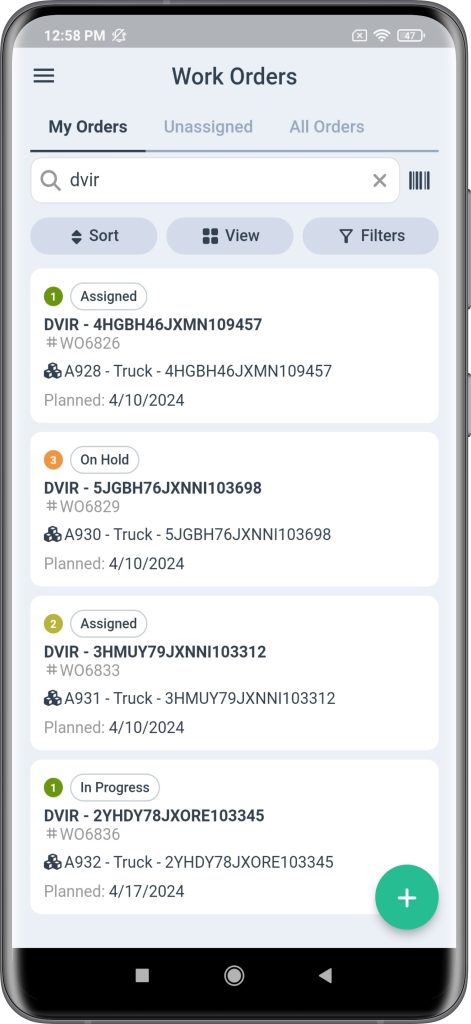
Source: WorkTrek
How to Do a DVIR
- Inspect the Vehicle: Drivers do a thorough check of the vehicle, including brake and
steering systems, wheels, tires, and mirrors, among other parts. This results in a driver-vehicle inspection report. This has to be done both for pre and post-trip inspection. - Report Problems: Any vehicle defects that could affect safety or lead to a breakdown
are noted. - Sign Off: The driver confirms the report. If there are two drivers, only one needs to sign
as long as both agree. - Repair Issues: The company must fix any problems reported before the vehicle is used
again.
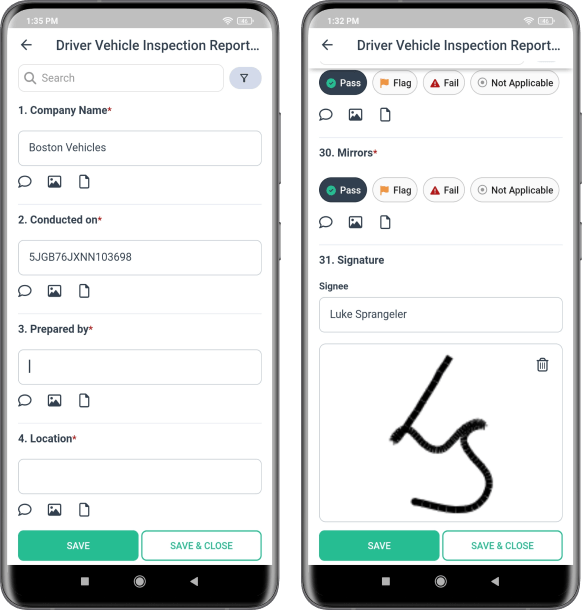
Source: WorkTrek
Automate Work Order Generation
Using a Work Order Management system, any issues found during the DVIR inspection can
be notified, and the work order can be automatically generated and assigned to the maintenance team.
By automating this process, CMMS systems can greatly reduce the number of manual steps fleet managers must take to manage their fleets, adding greater efficiency to the entire process.
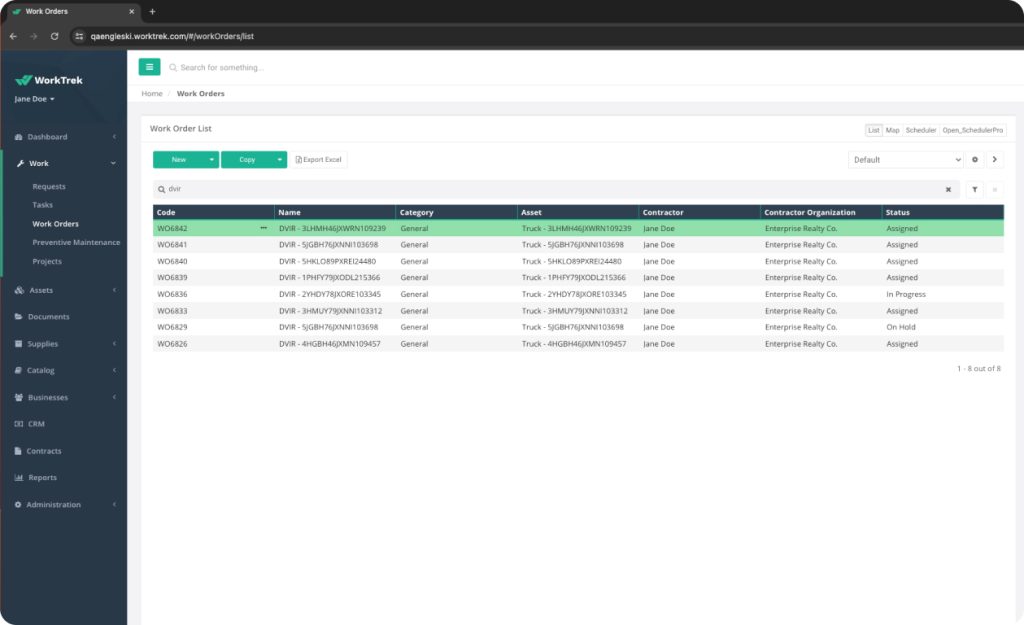
Source: WorkTrek
What is in the driver’s vehicle inspection report?
According to federal regulations, drivers need to look at all critical components.
Those include the following
- Service and Hand Brakes – Including trailer brake connections
- Windshield Wipers
- Horns
- Lights
- Steering System
- Mirrors
- Any emergency equipment – such as extinguishers, reflectors, and tires
What is considered a Commercial Motor Vehicle?
A commercial motor vehicle (CMV) is defined as any type of motor vehicle used for transporting goods or passengers for compensation. The specific definitions can vary slightly between jurisdictions, but there are common criteria that typically determine whether a vehicle is considered a commercial. These criteria often include:
- Weight: A CMV often has a gross vehicle weight rating (GVWR) or gross combination
weight rating (GCWR) above a certain threshold, typically 10,000 pounds (4,536
kilograms) or more. This weight includes the vehicle itself plus its cargo. - Passenger Capacity: Vehicles designed to transport a certain number of passengers
(often 16 or more, including the driver) can be classified as CMVs, especially if used for
commercial purposes like public transport or tour services. - Hazardous Materials: Vehicles used to transport types or quantities of hazardous
materials that require safety placards under regulations are also considered CMVs. - Commercial Purpose: The vehicle is used for business operations, including carrying
goods for hire, delivering merchandise, or transporting passengers for a fee.
Commercial drivers of such vehicles typically require special licenses, known as commercial driver’s licenses (CDLs), due to the unique challenges and safety issues associated with operating larger and more complex vehicles. Regulations for CMVs and their operators are often more stringent than personal vehicles, covering maintenance standards, driving hours, and driver qualifications. These regulations are enforced to ensure the safety of the driver, passengers, and the public and protect the environment from the potential hazards of transporting dangerous goods.
Going Digital with eDVIRs
Now, drivers can save time using digital reports (eDVIRs). WorkTrek offers a seamless eDVIR process and provides detailed reporting and notifications to all stakeholders.

Source: WorkTrek
Benefits of eDIVR
Electronic Vehicle Inspection Reports (eDVIRs) offer substantial advantages for commercial truck drivers and fleet managers, enhancing efficiency and safety across the board. Here’s how eDVIRs are changing the game:
- Efficiency in Inspections: Gone are the days of searching for the correct paper form and a working pen. eDVIRs, like WorkTrek, can streamline the inspection process by eliminating repetitive data entry and simplifying the tracking of previous reports, saving valuable time.
- Reduced Errors: The clarity of electronic reports means that drivers can easily review and sign off on their inspections, while back-office staff can quickly generate work orders and assign any repairs to the technicians. This digital approach significantly lowers the risk of mistakes and lost time due to manual entry and paperwork management.
- Simplified Compliance: Keeping up with FMCSA regulations is easier with eDVIRs. They ensure that three months of inspection reports are readily available for audits, helping fleets stay prepared and potentially improving CSA scores by addressing vehicle maintenance issues more effectively.
- Faster Repair Processes: With real-time submission, repair teams receive defect reports immediately, allowing for quicker scheduling of necessary repairs. Including photos with reports aids in quickly identifying and isolating issues, which is particularly crucial for addressing safety defects, thus minimizing downtime and promoting safer fleet operations.
- User-Friendly Electronic DVIR Apps: Utilize the smartphones your drivers already carry. With apps available for iOS and Android, there’s no need for additional hardware. Drivers can complete inspections, take photos for verification, and sign off with a digital signature, all from their device’s touchscreen.
- Custom eDVIR: eDVIR solutions provide the flexibility to create and modify forms tailored to different types of vehicles or equipment. This customization ensures accurate, relevant inspections and attaches the right form to the right asset, eliminating confusion and errors. By integrating electronic DVIR solutions, fleet operations can achieve higher efficiency, accuracy, and compliance, all while ensuring safety and reliability.
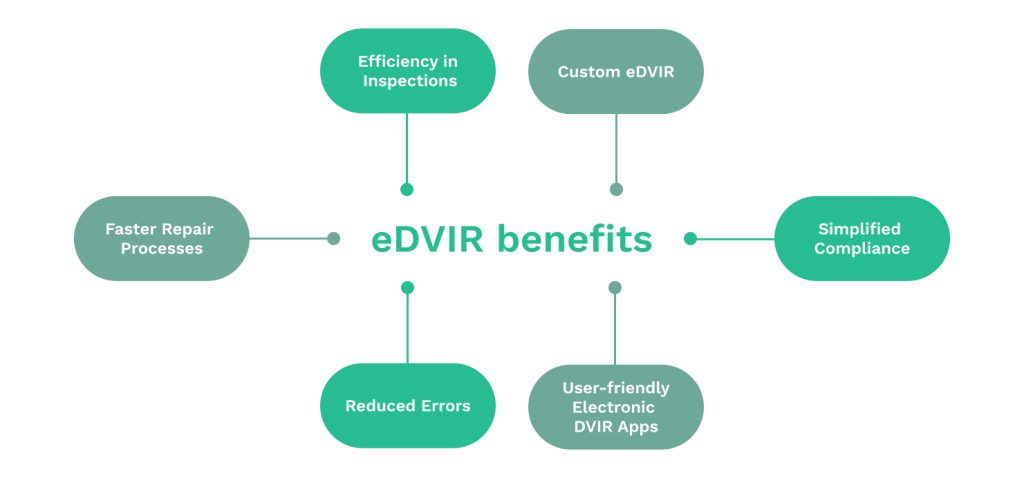
Source: WorkTrek
Electronic Logging Device (ELD)
An ELD, sometimes referred to as electronic DVIRs, is a crucial tool for commercial motor vehicle (CMV) drivers, designed to automate the recording of driving time and Hours of Service (HOS) records. Additionally, it gathers essential data on the engine performance, movement, and distance traveled.
By providing real-time updates on driver status, ELDs help keep both truck drivers and dispatchers well-informed, thereby enhancing fleet compliance and facilitating smoother
inspections, and improving overall planning.
ELDs include various components, such as a vehicle tracking device that attaches directly to the truck, comprehensive fleet management software, and a user-friendly mobile app.
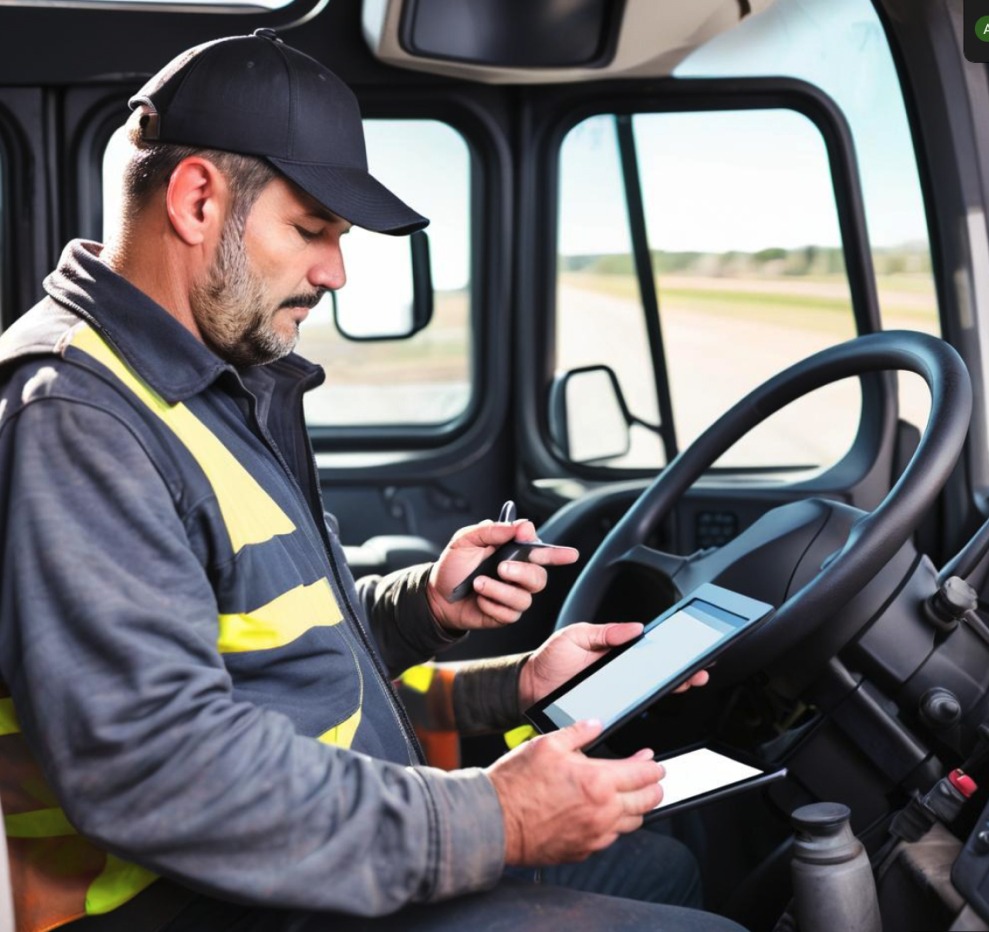
Source: Gencraft
Conclusion
DVIR, or Driver Vehicle Inspection Reports, play a crucial role in ensuring safety within commercial vehicle operations. In the United States, these reports are mandated by law, and Canada has its own set of specific requirements. Ignoring or failing to comply with DVIR guidelines can result in substantial penalties for businesses. However, adopting digital alternatives, known as eDVIRs, is streamlining the process, making it both easier and more efficient. This technological advancement greatly improves how commercial fleets manage safety inspections and compliance.

Source: WorkTrek





